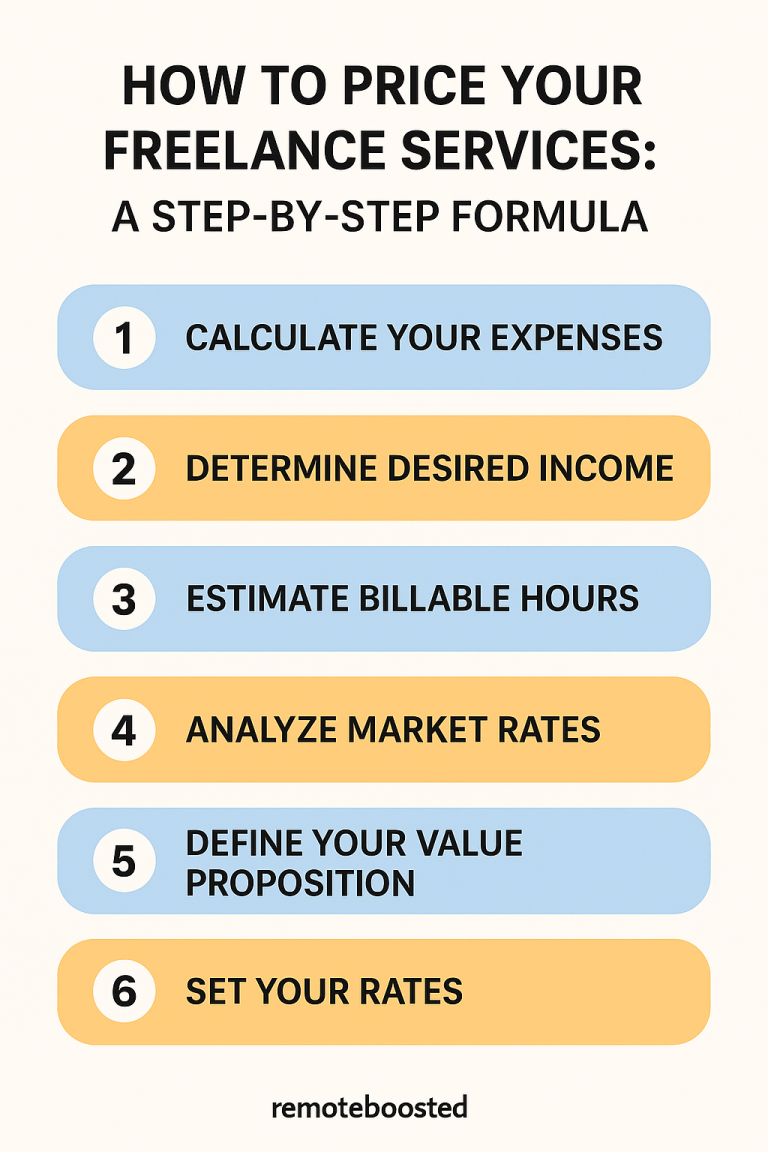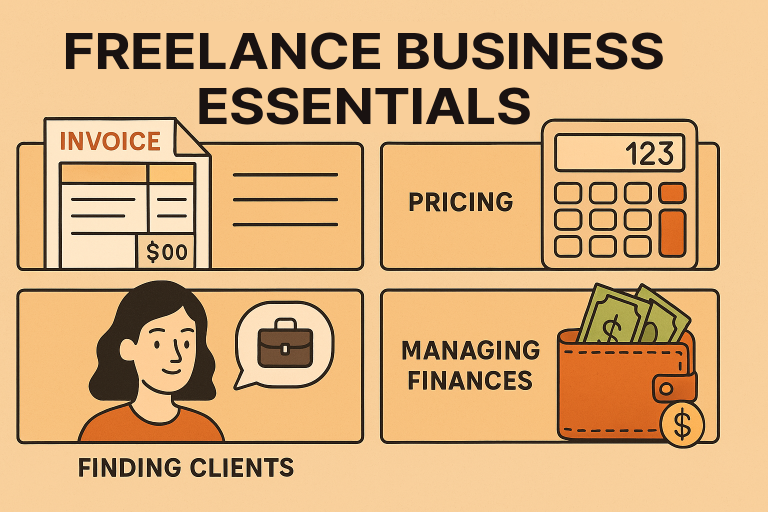The Ultimate Pricing Guide for Freelancers in 2025: How to Set Rates That Reflect Your Value
Pricing is one of the biggest challenges freelancers face—especially when starting out. Charge too little and you’ll burn out. Charge too much without the right positioning, and clients may disappear.
This guide walks you through how to set smart, sustainable freelance pricing in 2025—whether you’re new or looking to raise your rates.
1. Understand the Real Cost of Freelancing
Unlike a salaried job, freelancers cover more than just their hourly work:
- Taxes (20–30% depending on your country)
- Software & tools (Canva, Zoom, AI subscriptions)
- Health insurance or benefits
- Downtime, client acquisition, admin tasks
Rule of Thumb: Only 50–60% of your time is billable. Factor that into your rate.
Example: If your target monthly income is $3,000, and you can bill only 80 hours/month:
$3,000 ÷ 80 = $37.50/hour (minimum)
Add 20% for expenses: $45–50/hour minimum base rate
2. Choose a Pricing Model That Fits Your Work Style
There’s no one-size-fits-all. Common models include:
🔹 Hourly:
- Best for short or flexible tasks
- Easy to track with tools like Toggl, Clockify
- May lead to scope creep if not defined
🔹 Per Project:
- Ideal for repeatable deliverables (e.g., logo design, blog post)
- Allows efficiency-based profit
- Requires clear scope & contract
🔹 Value-Based:
- Charges based on impact, not time
- Great for copywriters, consultants, marketers
- Requires experience and case studies
Pro Tip: Start with hourly to learn your pace, then move to project-based as confidence grows.
3. Benchmark Rates in Your Industry and Region
Use sites like:
Look at your competitors, but don’t undercut. Pricing should reflect:
- Experience
- Niche/specialty
- Quality of results
“If you’re the cheapest, you’re rarely the best.”
4. Position Yourself for Higher Rates
Clients don’t just pay for labor—they pay for perceived value.
Improve your positioning by:
- Having a clean portfolio or website (Notion, Carrd)
- Showcasing testimonials or results (before/after, % increases)
- Specializing in a niche (“I help coaches launch courses”)
- Communicating confidently: clarity = premium perception
Script Tip:
“This package is $750 and includes strategy, copy, and two revisions. Based on past results, clients have seen 3–5x ROI.”
5. Use a Pricing Formula to Set Your Base Rate
Freelance Pricing Formula:
(Desired Annual Income + Expenses + Taxes) ÷ Billable Hours Per Year = Base Rate
Example:
- Desired income: $60,000
- Expenses: $10,000
- Taxes: $15,000
- Billable hours: 1,000
($60k + $10k + $15k) ÷ 1000 = $85/hour base rate
6. Offer Tiered Packages for Choice and Upselling
Give clients options:
Starter: $300 – Single deliverable (e.g., 1 logo)
Standard: $600 – Includes revisions, basic strategy
Premium: $1,200 – Includes extras, consultation, future support
This lets clients self-select—and increases average deal size.
7. Raise Rates Regularly and With Confidence
You’re not static—your skills and results grow.
Raise your rates when:
- You’re fully booked
- Clients get strong results
- You’re consistently undercharging compared to peers
How to notify:
“Starting May 1st, my project rates will increase to reflect the expanded value I provide. I’m happy to honor current rates for any project booked before then.”
Final Thoughts
Freelance pricing is part math, part mindset. Start by covering your real costs, then grow into rates that reflect your expertise.
Charge what you’re worth—not just what others are charging.
👉 Want a pricing calculator spreadsheet? Subscribe to our newsletter.
👉 Have a pricing lesson or tip to share? Drop it in the comments!






